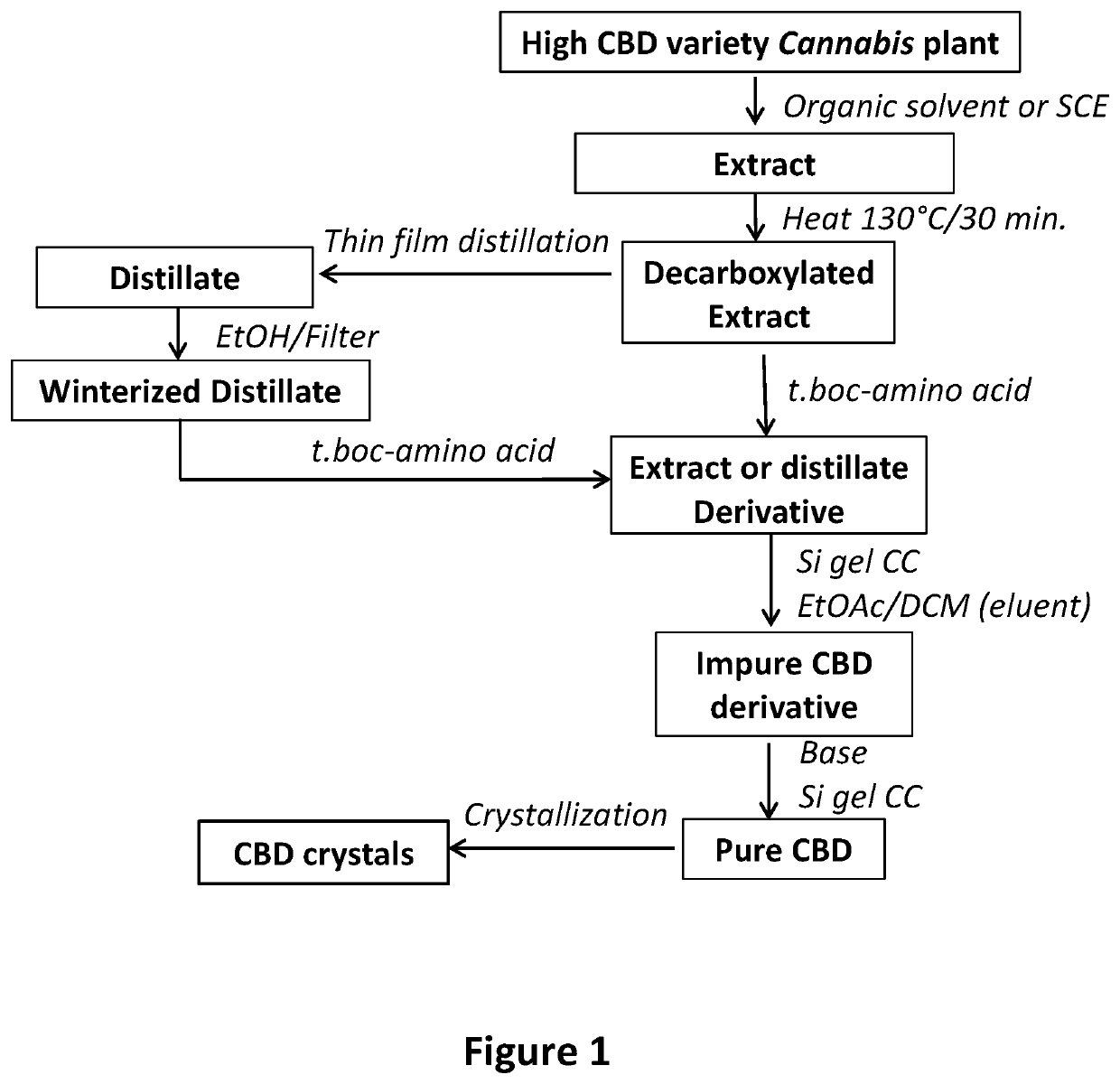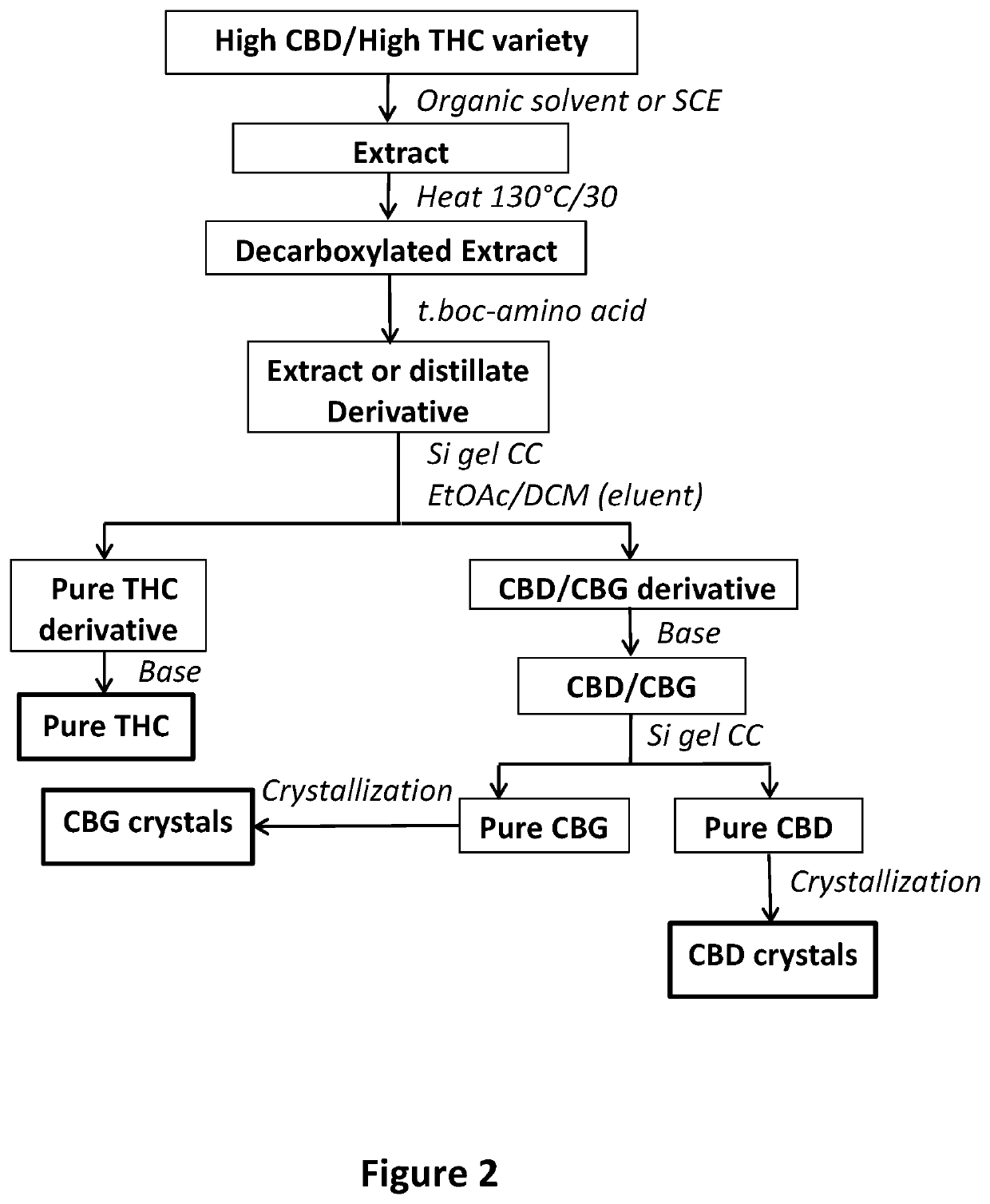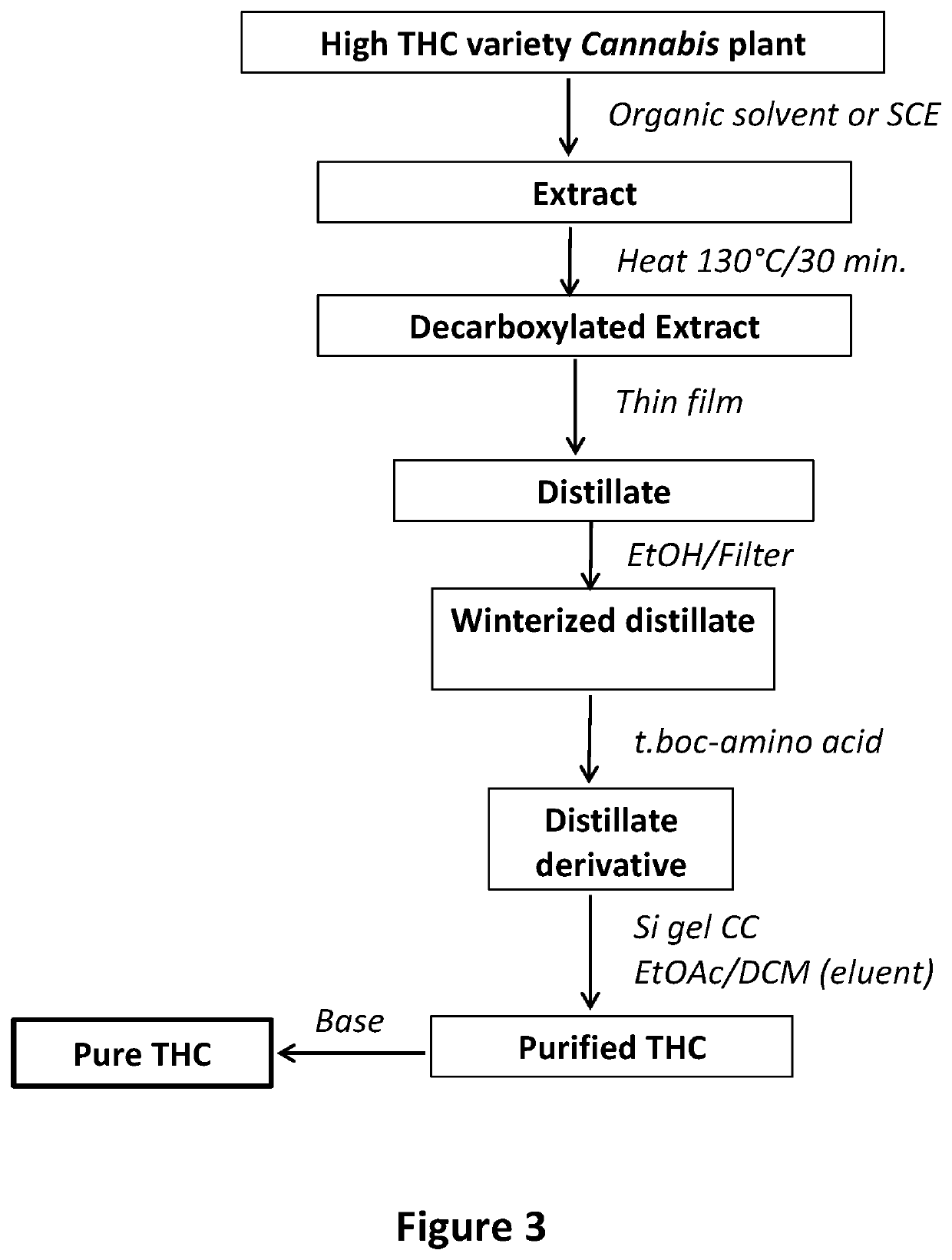Isolation of pure cannabinoids from Cannabis
a technology of pure cannabinoids and cannabis, which is applied in the field of isolation of pure cannabinoids from cannabis, can solve the problems of high cost of current soft gelatin capsule formulation, lack of consistency in effects, and high production of 11-oh-thc, and achieves separation of different natural cannabinoids, high yield, and high yield
- Summary
- Abstract
- Description
- Claims
- Application Information
AI Technical Summary
Benefits of technology
Problems solved by technology
Method used
Image
Examples
example no.1
Example No. 1
[0037]Production of CBD from the Decarboxylated Extract of a High CBD Variety of Cannabis
Extraction and Decarboxylation:
[0038]Air-dried and powdered buds (274 g) of a high CBD variety of Cannabis (3.0% CBD) were extracted by maceration at room temperature with hexanes (Fisher, H-302-4) for 24 hours (1.0 L hexanes×3). The hexanes extracts were combined and evaporated under vacuum to give 19.5 g of extract which was decarboxylated by heating at 130° C. for 30 minutes to give 16.6 g of decarboxylated extract (40% CBD by GC / FID analysis).
Chemical Derivatization:
[0039]A portion (7.8 g) of the decarboxylated extract was dissolved in 100 mL methylene chloride (DCM, Fisher, D37-4) to which dimethylaminopyridine (DMAP) (65 mg) was added, and the reaction mixture stirred at room temperature for 10 minutes, (mixture A). In another 1 L round bottom flask, Boc-Trp-OH (15.8 g, 2.1 eq, AnaSpec. Inc, 510-791-9560) was mixed with DCC (10.7 g, 2.1 eq., Alfa Aesar, A13016) and DCM (100 m...
example no.2
Example No. 2
[0044]Production of CBD from the Decarboxylated and Winterized Distillate of an Extract of CBD Rich Variety of Cannabis
Plant Material Extraction:
[0045]Dried and powdered Cannabis plant material (3.00 Kg) of CBD rich variety of Cannabis (4.03% CBD) was extracted by maceration in hexanes (20 L×2) followed by evaporation under reduced pressure to give 182.3 g dried extract (52.2% CBD).
Thin Film Distillation of the Crude Extract:
[0046]The hexane extract (182.3 g) was decarboxylated by heating in an oil bath for 30 minutes at 130° C., to give 162 g of decarboxylated extract. The process was monitored by TLC analysis and GC / FID of the TMS derivative or by HPLC to confirm complete decarboxylation. The decarboxylation step is essential to prevent frothing of the extract during the distillation process. The decarboxylated extract (153.0 g) was subjected to distillation using thin film distillation with the following conditions:
[0047]Vacuum: 44 m Torr
[0048]Temperature: 199° C.
[0...
example no.3
Example No. 3
[0060]Production of CBD from an Extract of an Intermediate Variety of Cannabis Containing High CBD and High THC
Plant Material Extraction:
[0061]Air dried powdered Cannabis plant (0.81 Kg) of Intermediate variety CBD variety (6.3% CBD and 2.96% THC) was extracted by maceration in hexanes (5.0 L×2) followed by evaporation under reduced pressure to yield 126.0 g dry extract (42.8%. CBD, 20.4% THC). Portion of the extract (27.14 g) was decarboxylated by heating in an oil bath at 130° C. for 30.0 min. to give 23.6 g of the decarboxylated extract (45.7% CBD, 19.4% THC).
Chemical Derivatization and Purification of the CBD and THC Adducts:
[0062]The decarboxylated extract (23.6 g) was chemically derivatized as before, using t-Boc-Trp-OH, to produce adduct. 1.2 L hexanes was added to the reaction product and kept in the freezer for 4 hours then filtered. The filtrate was evaporated to dryness under reduced pressure to give 79.75 g dried distillate adduct. Portion of the adduct (26....
PUM
| Property | Measurement | Unit |
|---|---|---|
| temperature | aaaaa | aaaaa |
| purity | aaaaa | aaaaa |
| pressure | aaaaa | aaaaa |
Abstract
Description
Claims
Application Information
 Login to View More
Login to View More - R&D
- Intellectual Property
- Life Sciences
- Materials
- Tech Scout
- Unparalleled Data Quality
- Higher Quality Content
- 60% Fewer Hallucinations
Browse by: Latest US Patents, China's latest patents, Technical Efficacy Thesaurus, Application Domain, Technology Topic, Popular Technical Reports.
© 2025 PatSnap. All rights reserved.Legal|Privacy policy|Modern Slavery Act Transparency Statement|Sitemap|About US| Contact US: help@patsnap.com



